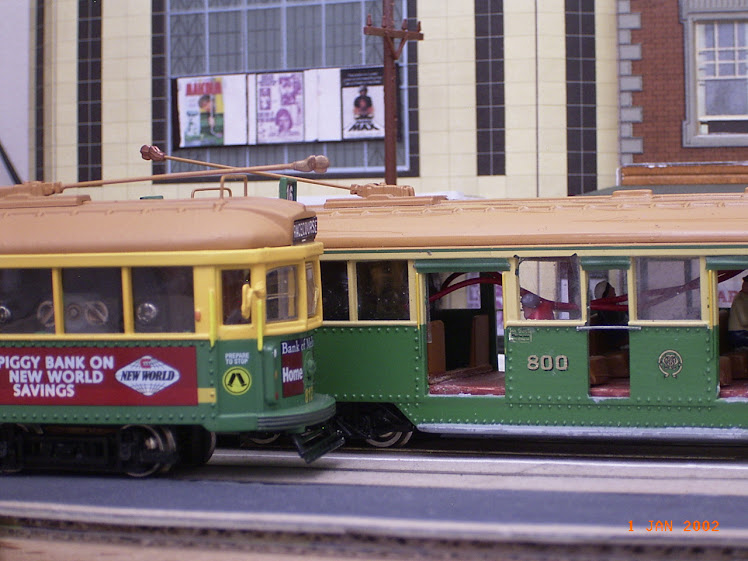It has been a month since Caulfield and I have done nothing since then, the layout has sat in the study as I left it when I came home on that Sunday night. The last weekend I started the getting 'the band back together', all that was needed, was a flick through of the
October AMRM to realise that I still have some work to do.
As part of the reinstatement of Victoria Street, the DC option has now been fully integrated, this now allows one tram at a time to be test ran to see if it should be fitted with DCC, and also gives those other pieces of rollingstock in my collection a chance to stretch their legs.
Since the conversion to DCC some two years ago, some trams and some new purchases have not the opportunity to get out of the display case and 'cut a notch'. Thus now introducing a rogues gallery of ring ins of my DC fleet......
A Walters Birney done up as MMTB X 217 with arse about doors
on a Tyco/Mantua Chassis.
A Tyco/Mantua tarted up as MMTB U 205
(Pretty much a dead ringer)
But wait, there's more waiting to become something else...
(and they all work!)
A Cooee Collectable Restaurant Tram with A Bachmann Brill Mechanism,
(this has a lot of potential with DCC/lights)
A Kochi 600 Hasagawa 1-80 kit with a Bachmann Brill Mechanism,
(The panto is pushing the body down at the No1 end,
another DCC candidate)
A Kato Hanover/Hiroshima Tram,
(Now this is a well built model)
A Double Truck Birney (Ken Kidder???)
This will need some work as it runs the old school
pick up from one side of one bogie, pick up from the other
side/ bogie, and it runs like a dog!
A Muni Boeing LRV by Mehano, this could have potential for DCC/Lights,
but could do with a better mechanism.
This is the RTR DC stock that has been waiting to have a crack, there are also some other projects/kits on the back burner waiting for their chance.
From under the wires and the smell of ozone of the rarely turned motor.
Regards Glenn.













.jpg)







































